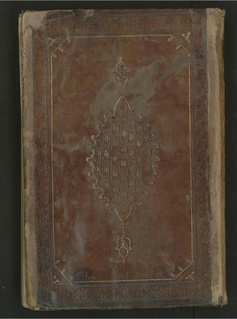Related Research Articles
Ahmad al-Tifashi whose full name is Sharaf al-Din Abu al-Abbās Aḥmad ibn Yusuf al-Ḳaysi al-Tifachi, born in Tiffech, a village near Souk Ahras in Algeria was an Arabic poet, writer, and anthologist, best known for his work A Promenade of the Hearts.

Ibn Abi Sadiq al-Naishaburi, Abu al-Qasim ‘Abd al-Rahman ibn ‘Ali was an 11th-century Persian physician from Nishapur in Khorasan. He was a pupil of Avicenna. As he composed a popular commentary on the Aphorisms of Hippocrates, he was known in some circles as "the second Hippocrates". Ismail Gorgani, the author of Zakhireye Khwarazmshahi, completed his studies under his guidance.
Hakim Ali ibn Kamal al-Din Muhammad Gilani was a 16th-century Gilak royal physician from Gilan, Iran.
Muhammad ibn Mahmud al-Amuli was a medieval Persian physician from Amol, Iran.
Muhammad Aqa-Kermani, also written Aqkirmani, was an 18th-century Persian physician from Kerman, Iran.

Jamal al-Din Muhammad ibn Muhammad ibn Muhammad ibn Fakhr al-Din al-Razi, also written al-Aqsara'i, was a 14th-century Muslim Iranian physician. He became known as Aqsara'i because he moved to Aqsara region of what is now Turkey.

Muhammad ibn Yusuf al-Harawi was a Persian late 15th century physician from Herat, Safavid Iran, now part of Afghanistan.
Muḥammad ibn Yusuf al-Ilāqī was an eleventh-century Persian physician from Khorasan.

Mahmūd ibn Muḥammad ibn Umar al-Jaghmini or 'al-Chaghmīnī', or al-Jaghmini, was a 13th or 14th-century Arab physician, astronomer and author of the Qanunshah a short epitome of by Avicenna in Persian, and Mulakhas (Summary), a work on astronomy completed in 808 AH - 1405/6 AD.
Shams al-Din Muhammad ibn Mahmud Shahrazuri was a 13th-century Muslim physician, historian and philosopher. He was of Kurdish origin. It appears that he was alive in AD 1288. However, it is also said that he died in the same year.

Burhan-ud-Din Kermani or Burhān al-Din Nafīs ibn ‘Iwad al-Kirmanī was a 15th-century Persian physician from Kerman. He was court physician to Ulugh Beg, the grandson of Tamerlane and the governor of Samarqand from 1409 to 1449.
Najm al-Din Mahmud ibn Ilyas al-Shirazi was a Persian physician from Shiraz in Persia.
Qiwam al-Din Muhammad al-Hasani was a Persian physician of the late 17th century. Hasani was a scholar who is known to have been working in the city of Qazvin in Persia in the year 1694 CE. The National Library of Medicine has in its collections a rare copy of a collection of five Arabic poems concerned with medicine, astronomy, arithmetic, calligraphy, and proper conduct. These five poems were collectively titled al-Khamsah al-Qazwiniyah. The copy at NLM was copied by a professional scribe for the author, whose stamps are in the volume, next to a statement that he corrected the volume in the year 1719–1720 CE. Thus we learn from this volume that Qiwan al-Din Muhammad al-Hasani was still working by 1719 CE.
Masʽud ibn Muhammad Sijzi was a Persian physician who lived before 1334CE in eastern Iran.

Carl Brockelmann German Semiticist, was the foremost orientalist of his generation. He was a professor at the universities in Breslau, Berlin and, from 1903, Königsberg. He is best known for his multi-volume Geschichte der arabischen Litteratur which included all writers in Arabic to 1937, and remains the fundamental reference volume for all Arabic literature, apart from the Christian Arabic texts.
Abd al-Wahhab al-Sha'rani was an Egyptian Shafi'i scholar and mystic, founder of an Egyptian order of Sufism, eponymously known as Šaʿrāwiyyah. The order gradually declined after Shaʿrani's death, although it remained active until the 19th century. Sharani's master was the prominent Shaykh Ali al-Khawas.
Muhammad ibn Mukarram ibn Alī ibn Ahmad ibn Manzūr al-Ansārī al-Ifrīqī al-Misrī al-Khazrajī also known as Ibn Manẓūr was an Arab lexicographer of the Arabic language and author of a large dictionary, Lisan al-ʿArab.
Sadid al-Din Muhammad ibn Mas‘ud al-Kazaruni was a 14th-century Persian physician from Kazerun, Fars, Iran.
As-Suwaydi was a medieval Arab physician from the Aws tribe, and a pupil of Ibn al-Baytar. Active in Cairo and Damascus, he compiled three works: a treatise on plant names, a treatise on the medical use of stones, and a book of medical recipes and procedures (Tadhkirah). As-Suwaydi's Tadhkirah was epitomized by Shaʿrānī in the 16th century.

Geschichte der arabischen Litteratur (GAL) is a reference work produced by the German scholar Carl Brockelmann. The work is considered a classic of Orientalist scholarship and it remains a fundamental reference volume for all Arabic literature.
References
- ↑ Decline of Muslim States and Societies: The Real Root Causes and What Can Be ... page : 267 : "Hussain al-Astarabadi of Golestan, Persia, wrote a commentary on Jaghmini's Qanunshah"
Founder of the Horufi sect.